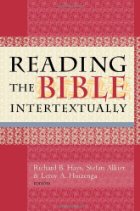.
[youtube=http://www.youtube.com/watch?feature=player_embedded&v=4y3X2VFruLM]
.
It’s growing. It’s on the way to becoming what I wished it would become. I had thought that the tail-ending catch-up game in New York was a symptom of the accelerating irrelevance of the U.S. But it’s catapulted into the 15th October movement or the Occupy Wall Street Movement. Not just a demonstration but the beginnings of a movement? Hoping still.
The first sign of hope with the new century was in 2001 with the World Social Forum. That spawned many regional social forums and I was involved in the Brisbane one for a few years. The momentum diminished but networks were being formed and organizational and educative ideas were being shared.
About the same time, only months apart, the International Solidarity Movement was born with the specific agenda of direct action support for the Palestinians and this had a remarkable history since — attracting two Nobel Peace Prize nominations.
2003 saw one of the most remarkable events in the history of democracy as grass-roots movements around the world coordinated to bring out millions in an effort to prevent a war from starting. It was clear to millions that leaders were lying and mainstream media was misinforming them about the threat posed by Iraq. The leaders and their communications channels were no longer able to “manufacture consent” for war as they had been so used to doing before. The powerless masses were capable of organizing globally and showing their strength by the millions. People who had never dreamt they would ever be a part of a street protest came out to be counted, seen and heard.
They failed to stop the war. But this was something totally new in history. Millions around the world coming out to attempt to stop a war before it started. It was a turning point. What the people were capable of doing and willing to do was now clear. What was needed was a catalyst, a cause to inspire with hope, a target or program that will sustain an ongoing will to change something significant.
What often sparks movements is a change in circumstances for the worse. Enter the GFC, the Global Financial Crisis. Add a little dose of being shown up by the more active and courageous peoples in Tunisia, Egypt, Bahrain, Yemen fighting for liberties the west took for granted . . . then Greece, Spain, France. . . . — realizing they had to fight to avoid losing sight forever of realities and hopes they once had.
This is the legacy of networks and activist sharing of organizational and communication tactics and methods initiated with the World Social Forum then demonstrated and revitalized with the anti-war protests of 2003. Being an activist for social justice causes often feels like one is part of a lost cause, trying to keep a candle burning with only a few other like-minds in a world of suffocating hopelessness. But that’s what it’s always been like for the last two hundred years. It’s mostly a matter of preparing, never giving up, continuing to keep the flickering alive, until the next “right moment” comes that will fan it into an expanding flame.
If the Wall Street demonstrations really do grow into a movement it will be because clear, simple and concrete, very specific, communicable programs will rise to the top. The World Social Forum brought together dozens of grass-roots agendas. That was its strength and weakness. The 2003 event was so huge in part because of the singularity of its goal.
But another vital factor seems to be crystallizing out of the current movements. What is also needed is a new story, a new myth, to capture imaginations. A story is needed to explain the current situations or crises facing the world. (It’s not just a financial crisis. We also need to have a habitable planet. And other little issues like space-control and multiple means of mass destruction are not healthy assets, either.) The stories that served the late eighteenth, nineteenth centuries and early twentieth centuries are obsolete. They don’t work anymore. But some think they only need revitalizing and adapting. Something clear, sensible and dramatic needs to be found that can unite us in a common understanding of where we are, where we have been and the simple options before us.

